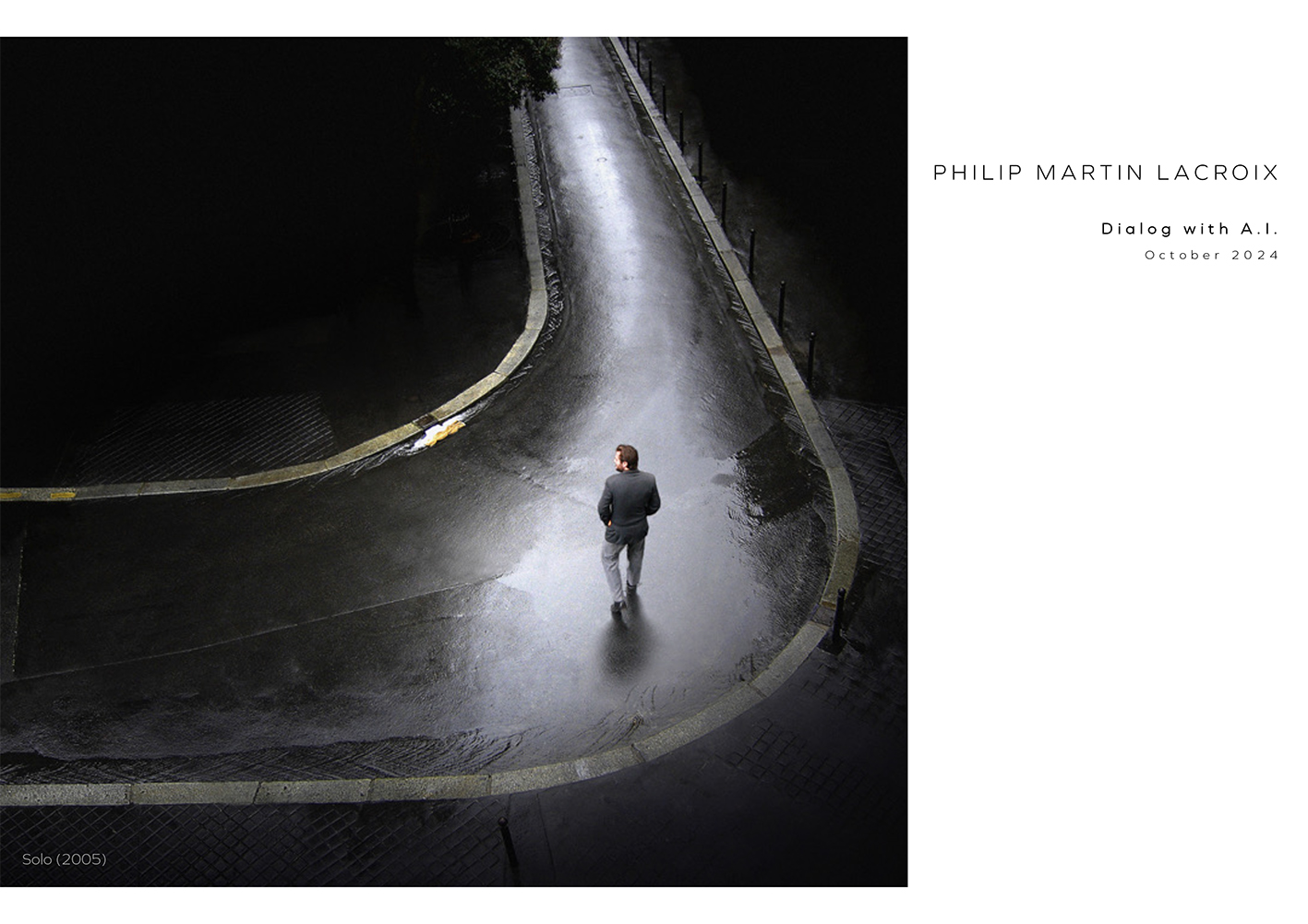
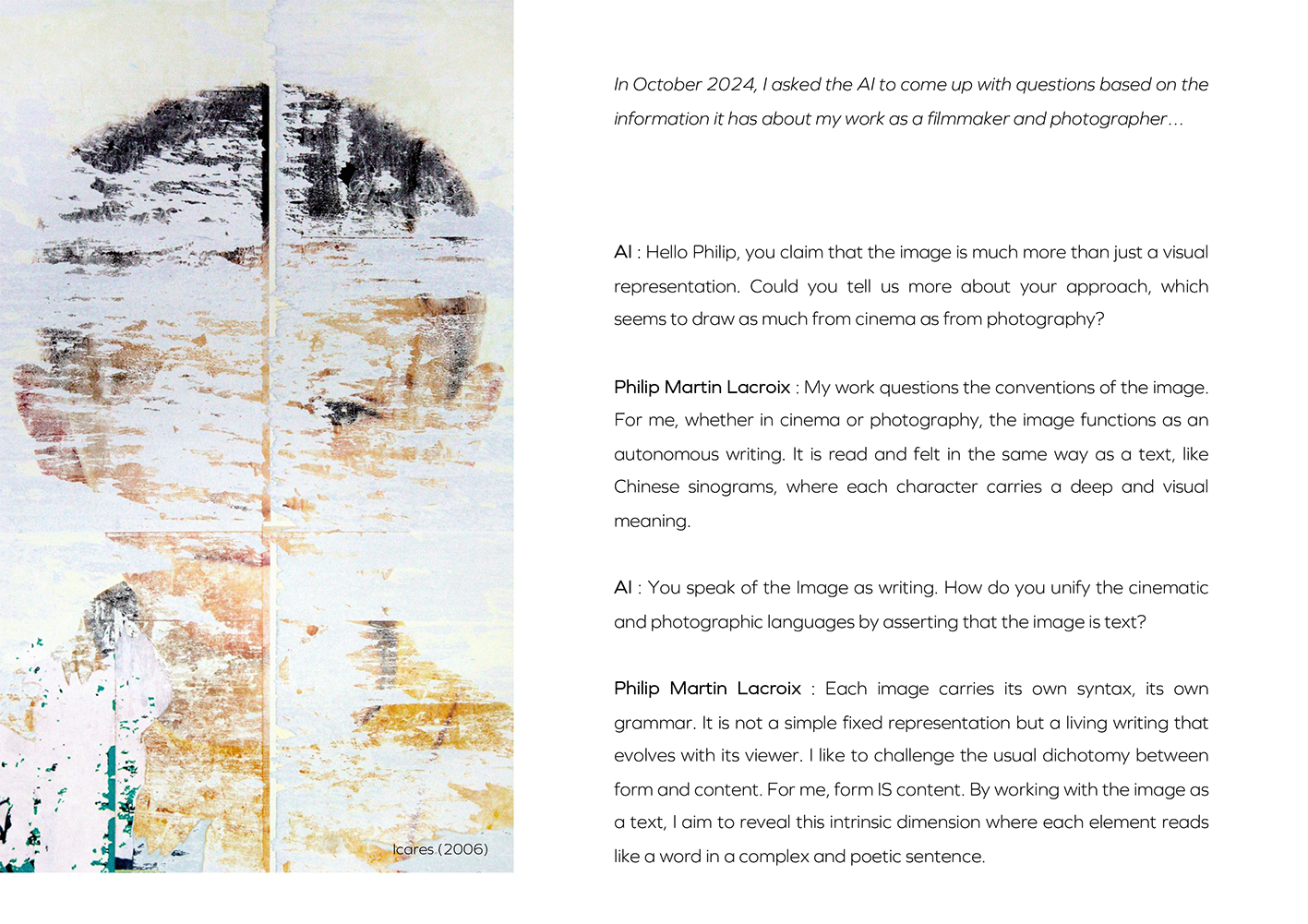
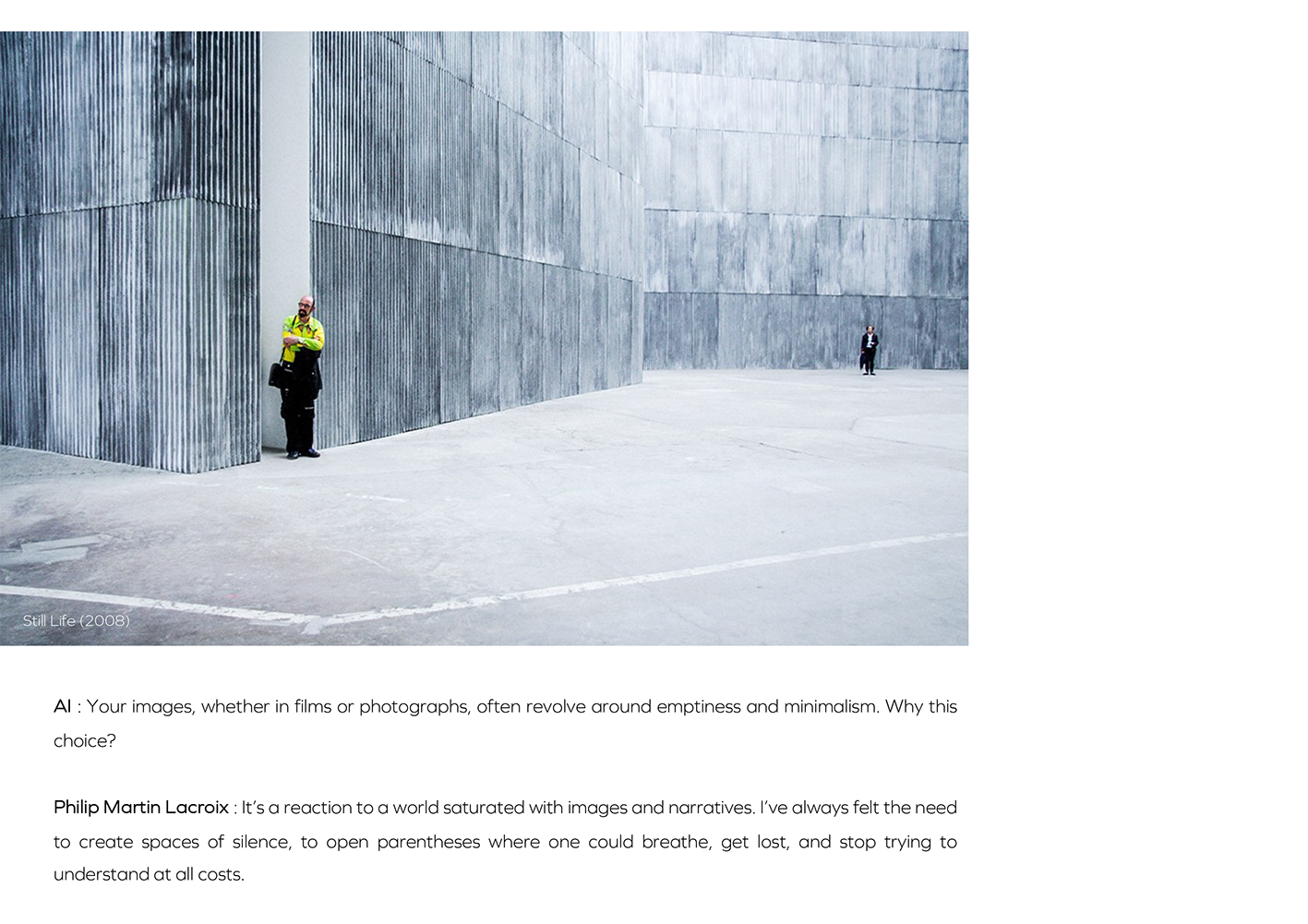
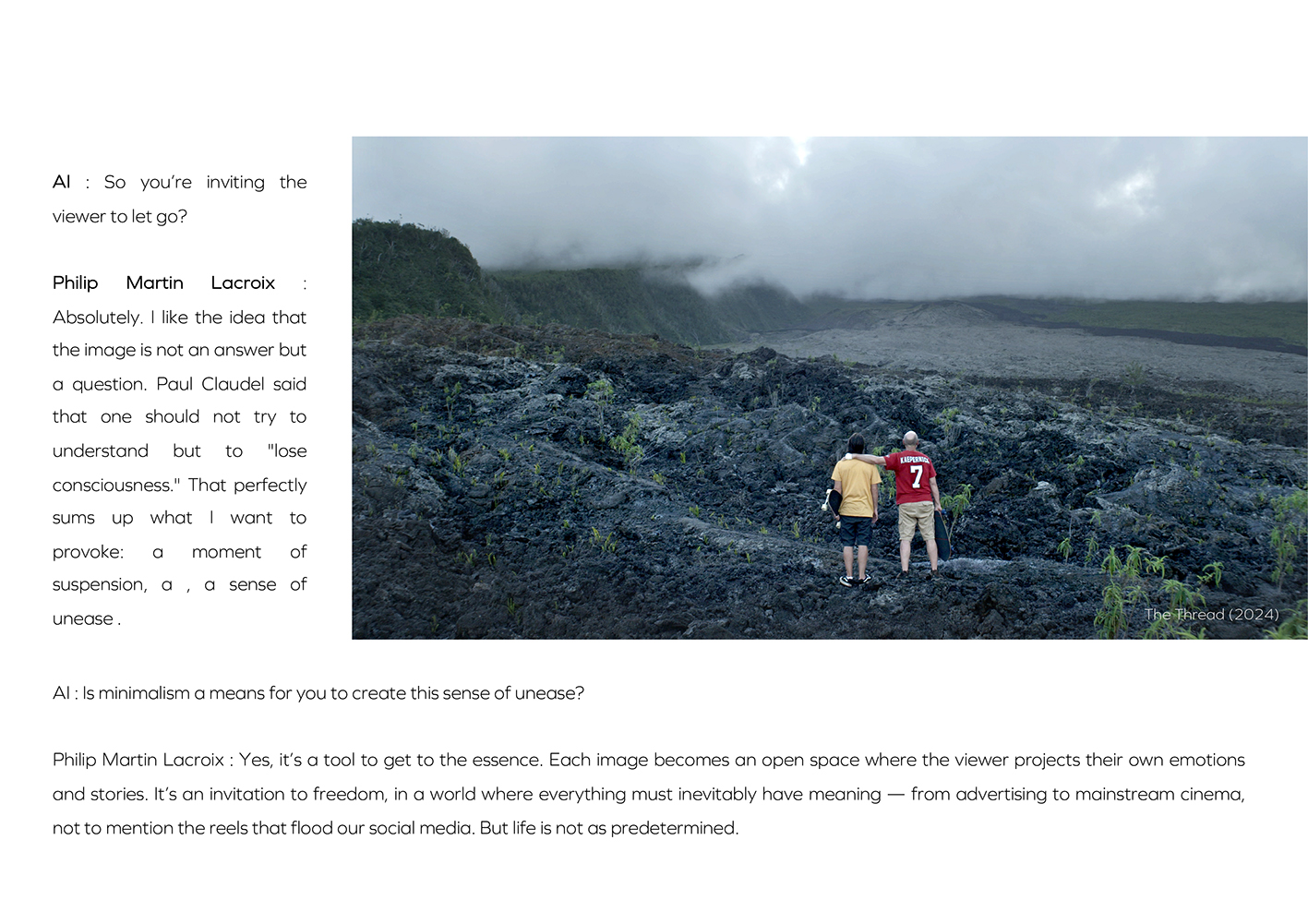
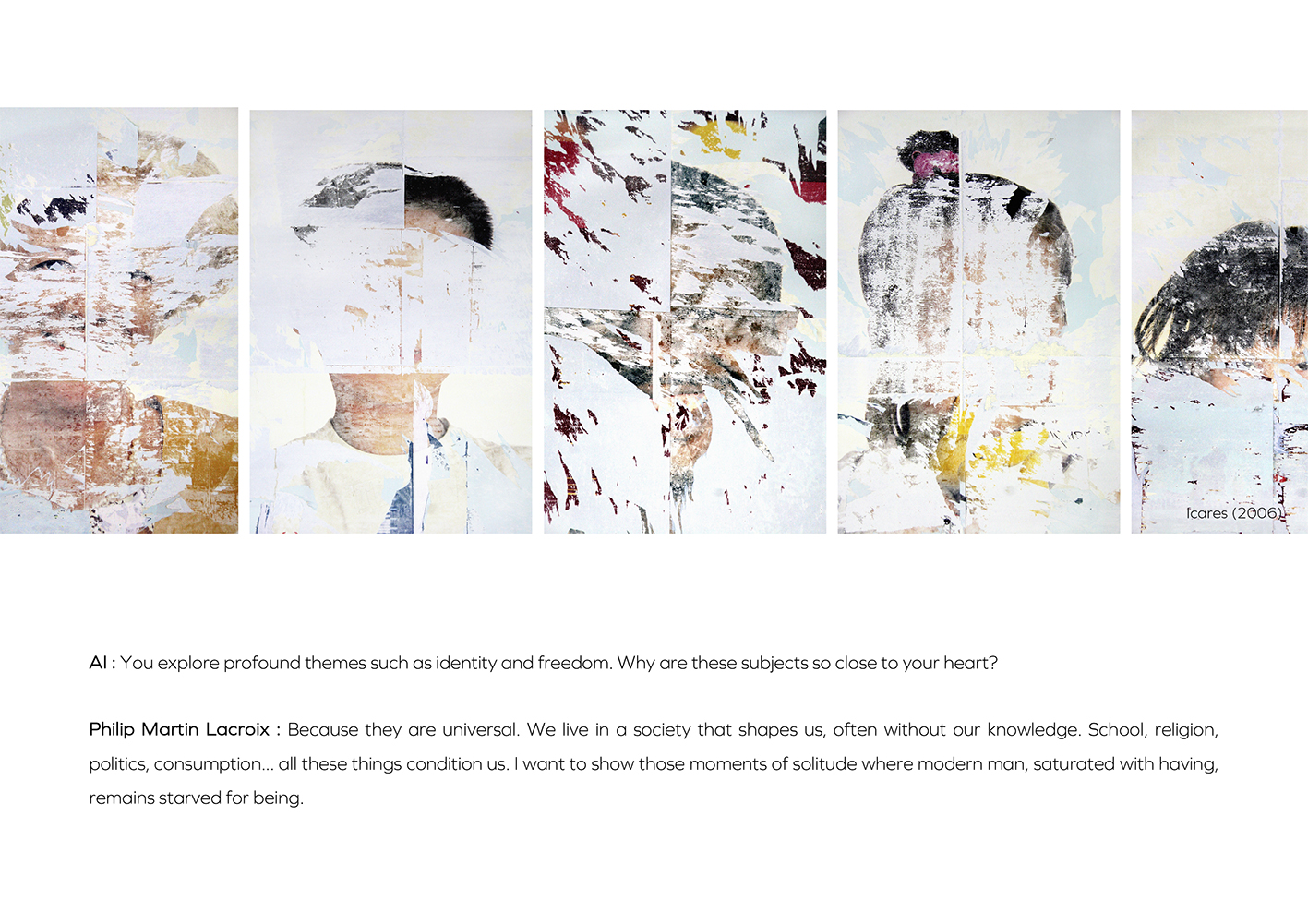
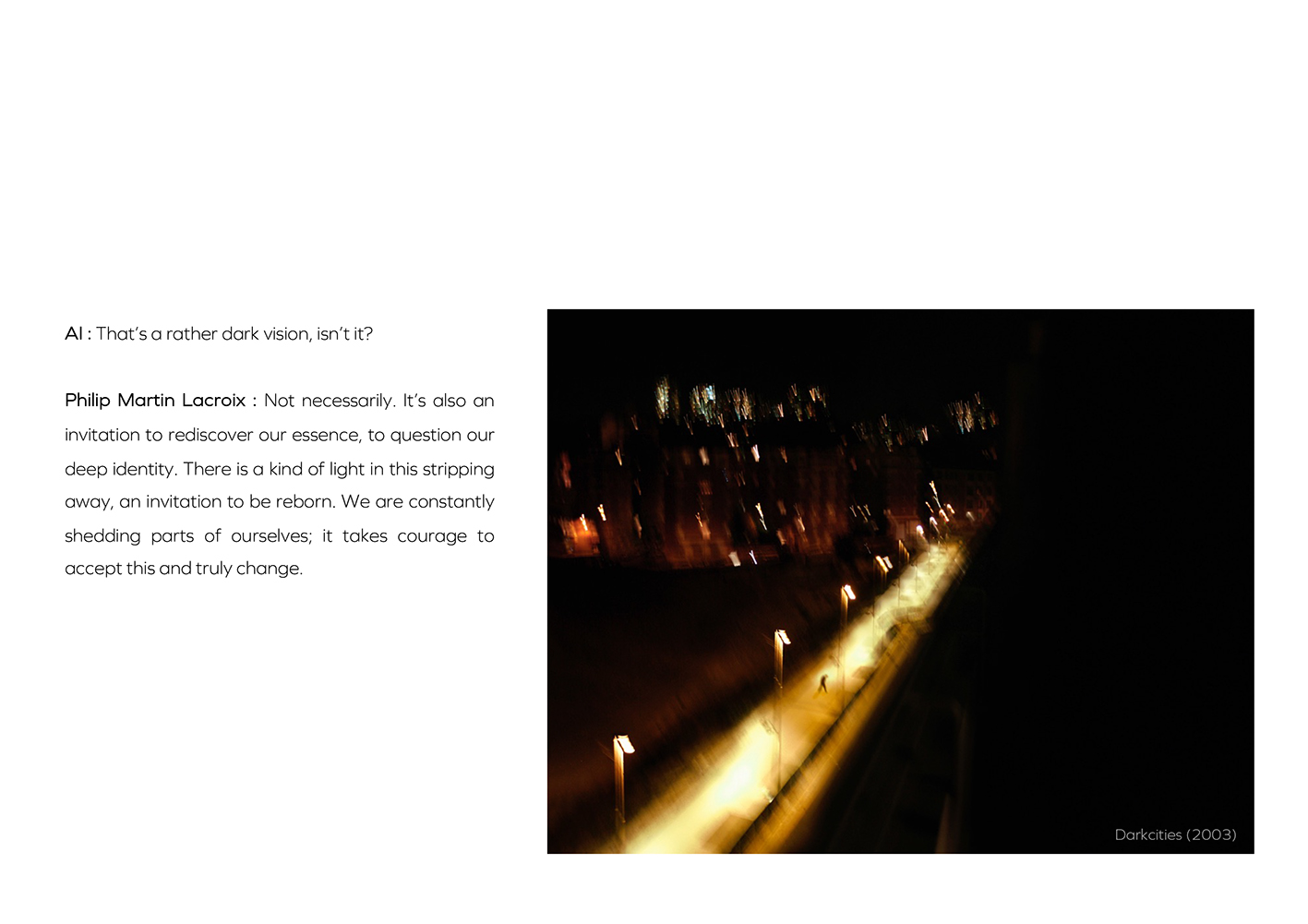
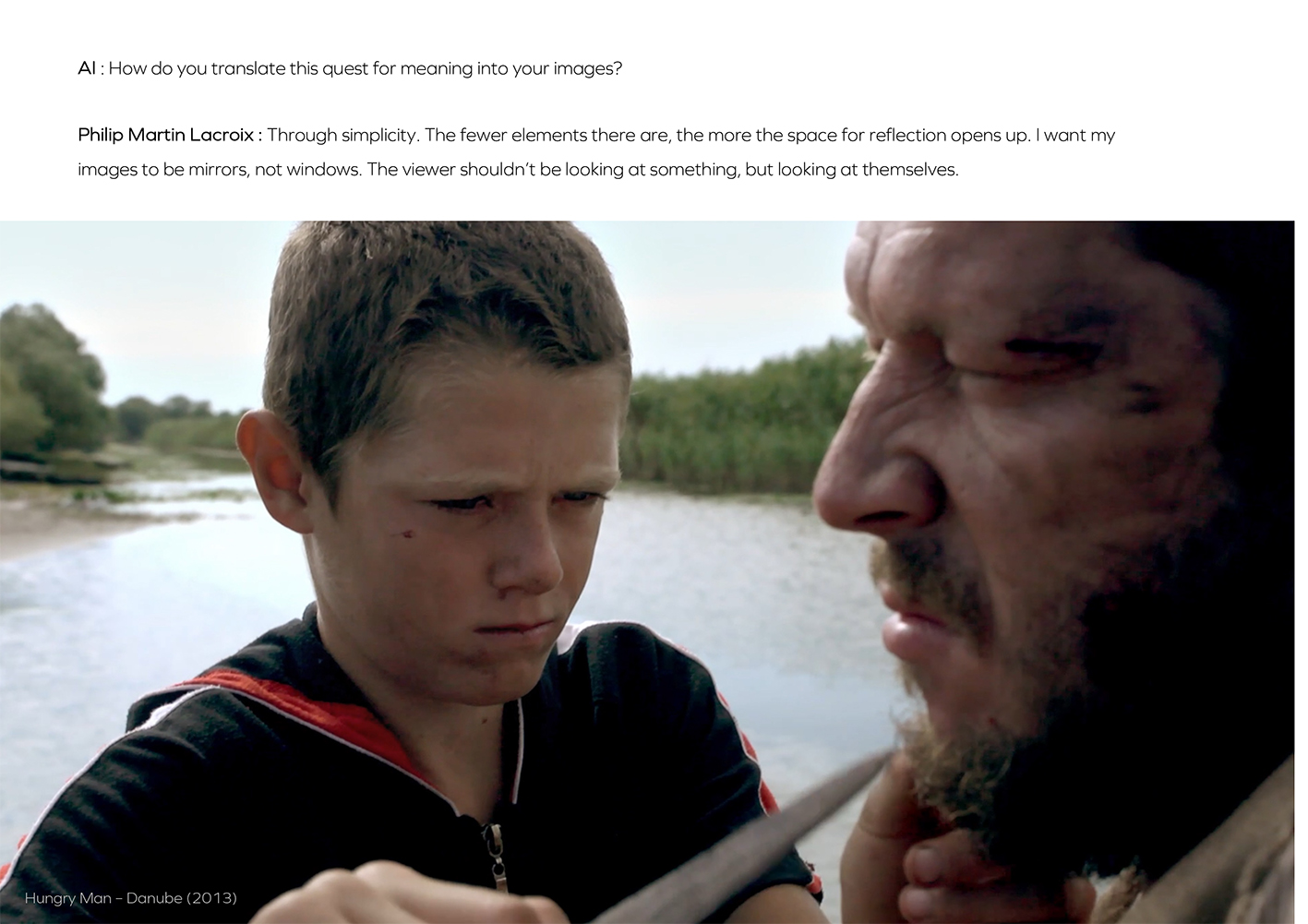
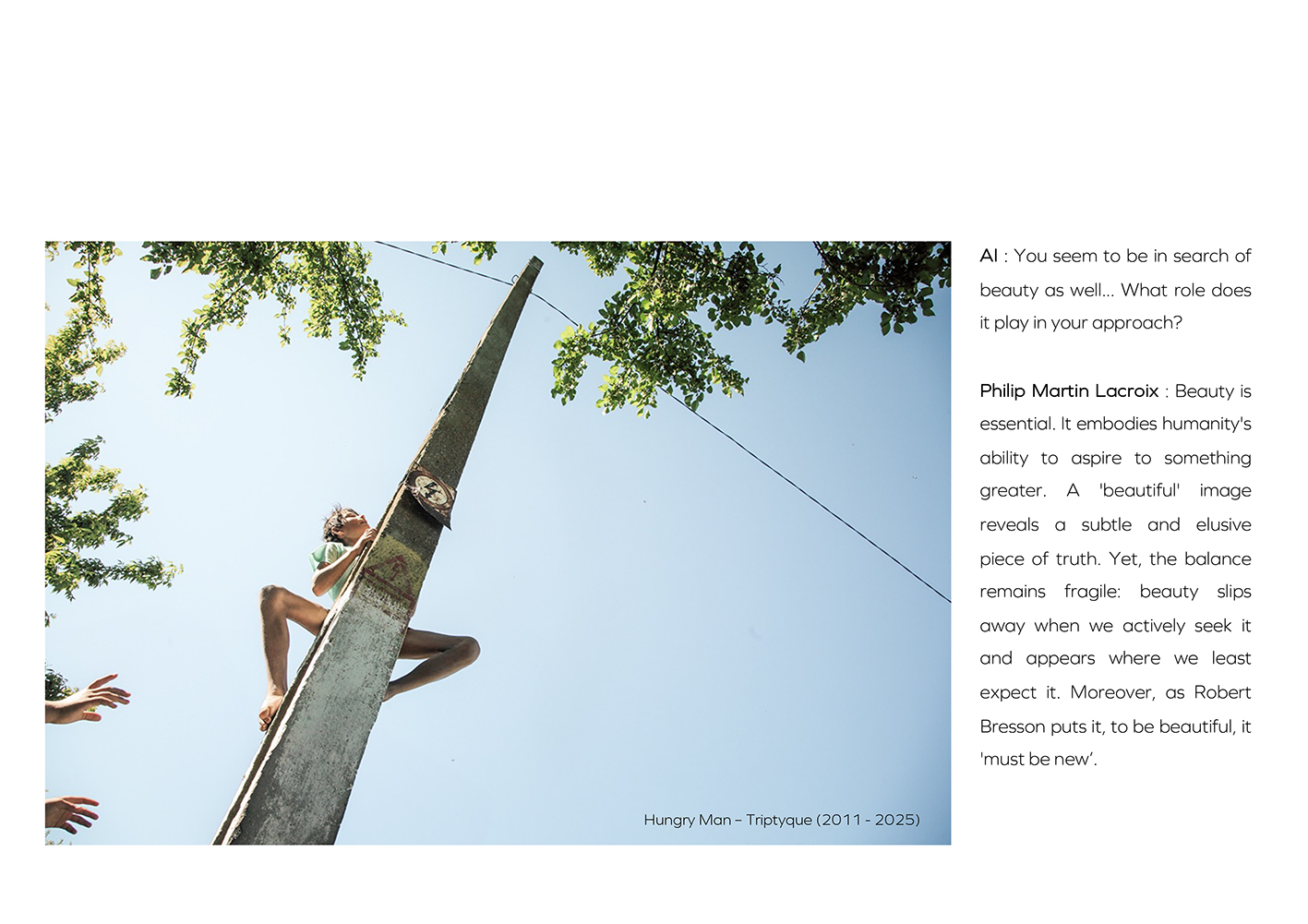
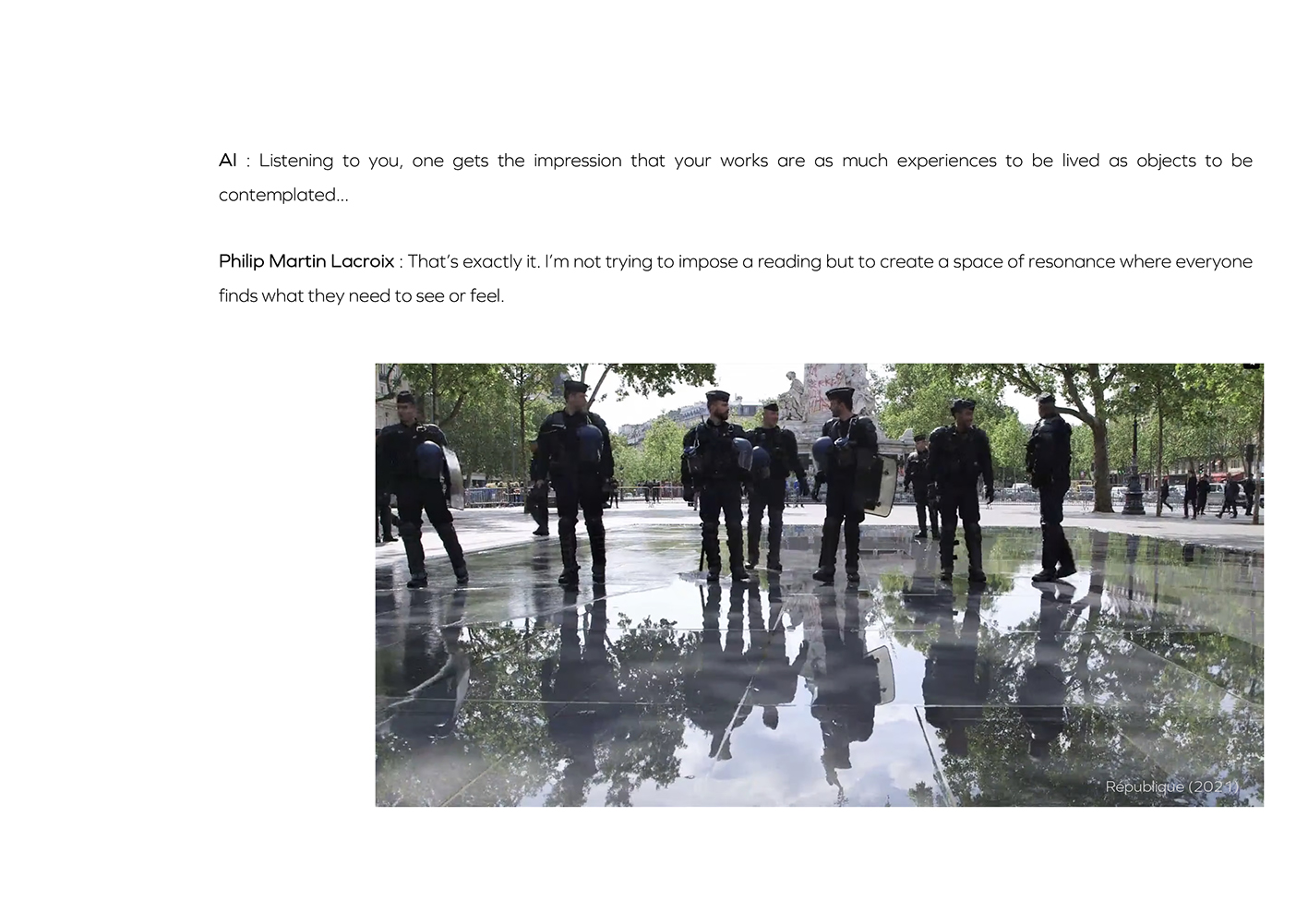
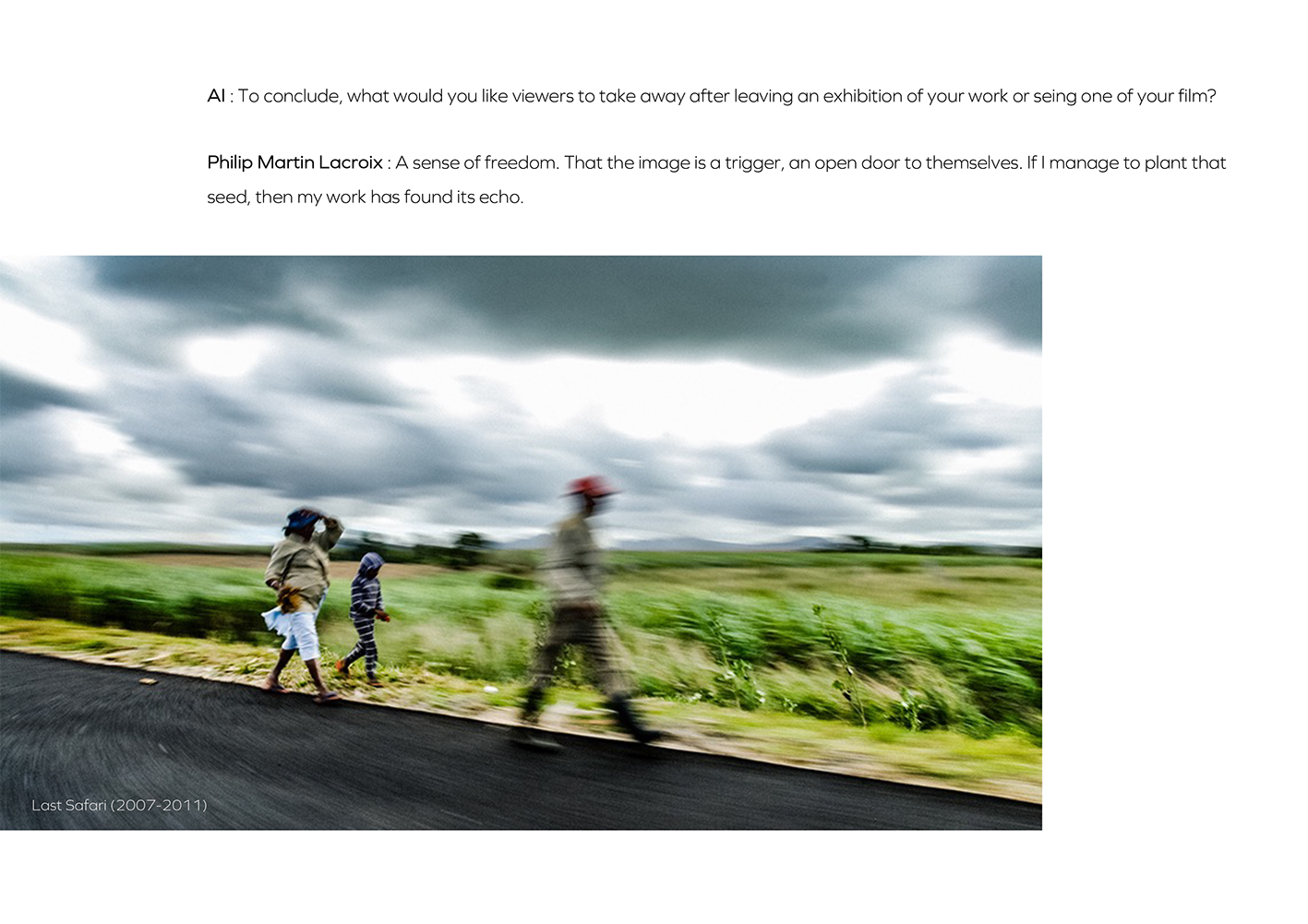
Dialog with A.I.
October 2024
In October 2024, I asked the AI to come up with questions based on the information it has about my work as a filmmaker and photographer…
AI : Hello Philip, you claim that the image is much more than just a visual representation. Could you tell us more about your approach, which seems to draw as much from cinema as from photography?
Philip Martin Lacroix : My work questions the conventions of the image. For me, whether in cinema or photography, the image functions as an autonomous writing. It is read and felt in the same way as a text, like Chinese sinograms, where each character carries a deep and visual meaning.
AI : You speak of the Image as writing. How do you unify the cinematic and photographic languages by asserting that the image is text?
Philip Martin Lacroix : Each image carries its own syntax, its own grammar. It is not a simple fixed representation but a living writing that evolves with its viewer. I like to challenge the usual dichotomy between form and content. For me, form IS content. By working with the image as a text, I aim to reveal this intrinsic dimension where each element reads like a word in a complex and poetic sentence.
AI : Your images, whether in films or photographs, often revolve around emptiness and minimalism. Why this choice?
Philip Martin Lacroix : It’s a reaction to a world saturated with images and narratives. I’ve always felt the need to create spaces of silence, to open parentheses where one could breathe, get lost, and stop trying to understand at all costs.
AI : So you’re inviting the viewer to let go?
Philip Martin Lacroix : Absolutely. I like the idea that the image is not an answer but a question. Paul Claudel said that one should not try to understand but to "lose consciousness." That perfectly sums up what I want to provoke: a moment of suspension, a , a sense of unease .
AI : Is minimalism a means for you to create this sense of unease?
Philip Martin Lacroix : Yes, it’s a tool to get to the essence. Each image becomes an open space where the viewer projects their own emotions and stories. It’s an invitation to freedom, in a world where everything must inevitably have meaning — from advertising to mainstream cinema, not to mention the reels that flood our social media. But life is not as predetermined.
AI : You explore profound themes such as identity and freedom. Why are these subjects so close to your heart?
Philip Martin Lacroix : Because they are universal. We live in a society that shapes us, often without our knowledge. School, religion, politics, consumption... all these things condition us. I want to show those moments of solitude where modern man, saturated with having, remains starved for being.
AI : That’s a rather dark vision, isn’t it?
Philip Martin Lacroix : Not necessarily. It’s also an invitation to rediscover our essence, to question our deep identity. There is a kind of light in this stripping away, an invitation to be reborn. We are constantly shedding parts of ourselves; it takes courage to accept this and truly change.
AI : How do you translate this quest for meaning into your images?
Philip Martin Lacroix : Through simplicity. The fewer elements there are, the more the space for reflection opens up. I want my images to be mirrors, not windows. The viewer shouldn’t be looking at something, but looking at themselves.
AI : You seem to be in search of beauty as well... What role does it play in your approach?
Philip Martin Lacroix : Beauty is essential. It embodies humanity's ability to aspire to something greater. A 'beautiful' image reveals a subtle and elusive piece of truth. Yet, the balance remains fragile: beauty slips away when we actively seek it and appears where we least expect it. Moreover, as Robert Bresson puts it, to be beautiful, it 'must be new’.
AI : Listening to you, one gets the impression that your works are as much experiences to be lived as objects to be contemplated...
Philip Martin Lacroix : That’s exactly it. I’m not trying to impose a reading but to create a space of resonance where everyone finds what they need to see or feel.
AI : To conclude, what would you like viewers to take away after leaving an exhibition of your work or seing one of your film?
Philip Martin Lacroix : A sense of freedom. That the image is a trigger, an open door to themselves. If I manage to plant that seed, then my work has found its echo.
